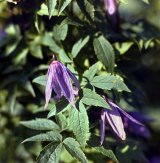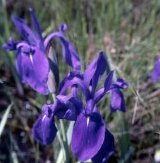 |
QUICK SEARCH
MO PROJECTS:
Africa
Asia/Pacific
Mesoamerica
North America
South America
General Taxonomy
Photo Essays
Training in Latin
America
MO RESEARCH:
Wm. L. Brown Center
Bryology
GIS
Graduate Studies
Research Experiences
for Undergraduates
Imaging Lab
Library
MBG Press
Publications
Climate Change
Catalog Fossil Plants
MO DATABASES:
W³MOST
Image Index
Rare Books
Angiosperm
Phylogeny
Res Botanica
All Databases
INFORMATION:
What's New?
People at MO
Visitor's Guide
Herbarium
Jobs & Fellowships
Symposium
Research Links
Site Map
Search
ORNAMENTAL PLANTS IN THEIR NATURAL HABITATSThe Far East Baykal area, Russia
The western part of Primorskiy Range is connected to the Tunkinskiy
Range which belongs to the Eastern Sayan mountain system. The journey to
the Tunka valley (Tunkinskaya Dolina) from Irkutsk might be a one day
trip. The valley bottom is occupied by forests, steppes, and farm land.
Pinus sibirica, accompanied by various sets of shrubs and mosses,
occupies many sites. Rhododendron dauricum and Bergenia
crassifolia grow higher up the slopes, while Lonicera altaica,
Further north and along the western shore, the general characterisics of the vegetation change, largely because the climate becomes much drier and colder. A complex of xero-mesophytic vegetation occurs on the coastal slopes, dominated by Allium strictum, Artemisia gmelinii, Aster alpinus, Calamagrostis turczaninowii, Ephedra monosperma, Orostachys spinosa, Phlojodicarpus popovii and Selaginella borealis. The dry steppes here present a sharp contrast to the forests that dominate the other coastal sections of Baykal. Olkhon Island, which is over 70 km (44 miles) long, is the largest in Baykal, and it is under the climatic influence of the lake. In spring and summer the lake cools the shores, because the water surface temperature is 4-5° C (39-41° F) at the beginning of summer and does not exceed 13° C (55° F) in August. In late autumn and winter this enormous area of water (ca. 31,500 sq km/12,200 sq miles) warms the adjacent territory. The annual precipitation is only 170-200 mm (6.7-7.7"). Gravelly steppes and meadow-steppes are predominant and lie bare in winter. All the plants here are adapted to these drier and moderate environmental conditions, and there are many mat-forming and cushion-like plants. The pea family is abundantly represented by species of Astragalus, Hedysarum and Oxytropis. In addition, some cold resistant xerophytes and other mountain elements include Androsace incana, Eremogone cappilaris, Aster alpinus, Papaver nudicaule and Patrinia sibirica. All of these plants can be considered as ornamentals, and can be used for various purposes, such as in rock gardens, flowerbeds and group planting. Some species are believed to be Pleistocene relicts, as the Pleistocene glaciation was not continuous in the warmer Baykal region. As a result, many relicts survived, and their close relatives are Far-Eastern, Central Asian and American. Some ornamental monocots grow along the Angara River. The yellow-flowered Tulipa uniflora, which is one of the only seven tulips in the Siberian flora, appears in May on rocky hillsides. The red-flowered Lilium pumilum blooms in June. Lilium martagon, which is here about 1 m tall and produces up to 10 bright lilac flowers, rises above the grasses in the forest clearings and meadows. This same plant community includes a daylily, Hemerocallis minor, which has large, bright yellow flowers. Veratrum nigrum, false hellebore, produces very attractive candle-like inflorescences with deep, dark cherry-colored flowers. In June, the steppe hills are covered with bright pink patches of flowering onions. Allium senescens, with hemispherical inflorescences, is a very attractive and cold-resistant plant. It was intoduced into St. Petersburg where it does well. The Baykal flora includes some species of genera that are predominantly North American, among them Phlox sibirica and Zigadenus sibiricus, the sole representatives in the Russian flora. Both occur in open forests, on rocky soil and in forb steppes. Far Eastern floras are rich and unique in the Northern Hemisphere. Numerous species are confined to these islands, and do not occur on the mainland. Species are either common to Japan and America or confined exclusively to the Far Eastern islands. Several species long in cultivation, usually originating from Japan or China. Other taxa are horticulturally promising, and grown at the Vladivostok Botanical Garden, where visitors can see a good collection of these plants. Other reserves in the Far East area, in addition to what has been mentioned, include: Kranotsky Reserve in Kamshatka, Ussurysky Reserve in Maritime Region, etc. Futhermore, a considerable number of Far Eastern species have been introduced into the botanical gardens of Moscow and St. Petersburg. Far Eastern plants are of considerable interest and promise for horticulture settings worldwide. |
||
| ORNAMENTAL PLANTS FROM RUSSIA |
© 1995-2025 Missouri Botanical Garden, All Rights Reserved
4344 Shaw Blvd.
St. Louis, MO 63110
(314) 577-5100
Technical Support

